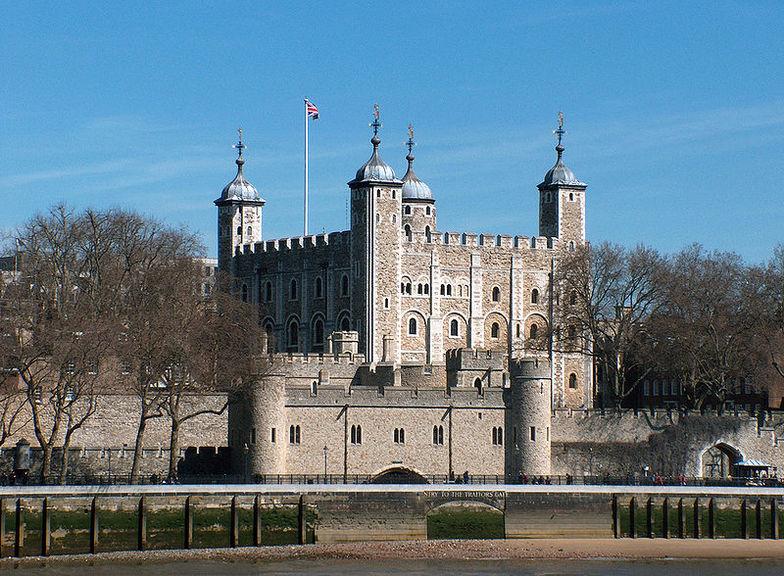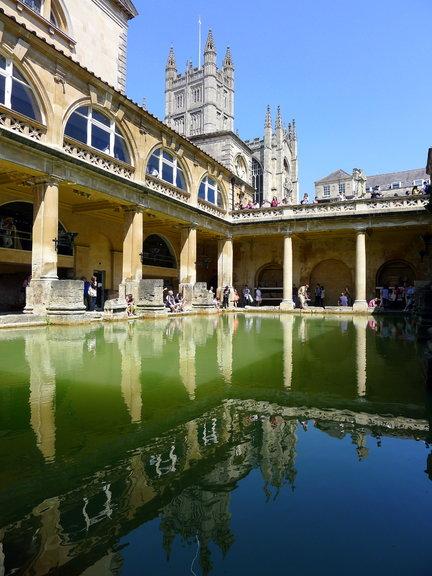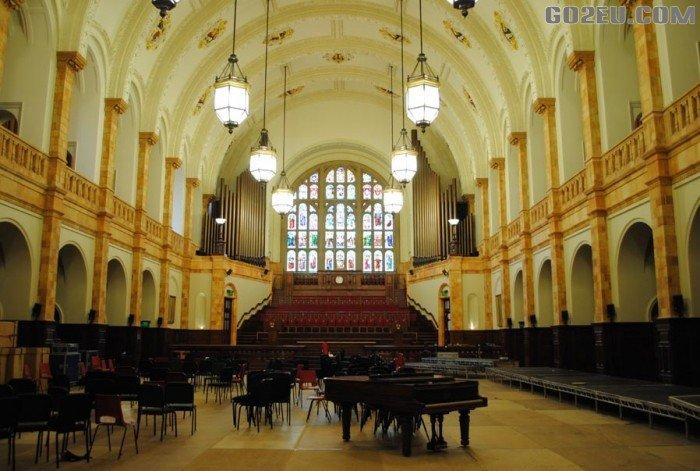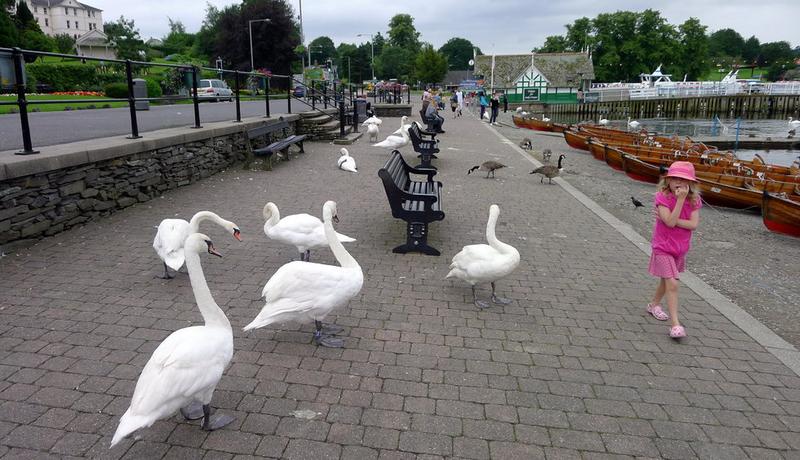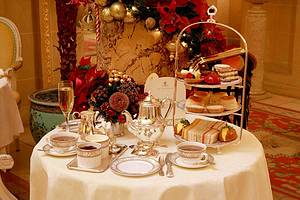7-day tour of the Lake District in England
9 cities |
29 attraction(s) |
total distance 212
km
 TIPS
TIPS
Day1
Day2
Day3
Day4
Day5
Day6
Day7
Day1: London
5 attraction(s) ·
14 km
1
The British Museum is one of the world's most famous museums with nearly eight million items in its collection. There are treasures from all over the world, from Egyptian mummies to Chinese antiquities, and it's all free to visit. If you have time, spend a whole day here, but if you only have 10 minutes, head straight to the mummy exhibition! Don't forget to explore the treasures in the Chinese section as well. The Great Court with its impressive glass roof is the main entrance, and the central circular reading room used to be part of the British Library until its relocation in 2000. It's recommended to arrive early to avoid the crowds, and you can also rent an audio guide to learn more about the history behind each exhibit.
3
km
2
Westminster Palace, also known as the Houses of Parliament, is the home of the UK Parliament (including the House of Commons and the House of Lords). Located on the west bank of the River Thames, it is situated close to other government buildings within the Whitehall area. Westminster Palace is a prime example of Gothic Revival architecture and was designated as a UNESCO World Heritage Site in 1987. The famous Big Ben is located in the clock tower at the northwest corner.
The building consists of around 1,100 individual rooms, 100 staircases, and 4.8 kilometers of corridors. Although the palace today is largely a result of 19th-century restorations, it still retains many historical features from its original construction, such as Westminster Hall (dating back to 1097), which is used for significant public ceremonial events, such as lying in state.
Big Ben, nicknamed for the clock tower of Westminster Palace, is one of the iconic landmarks in London. The tower stands at 95 meters tall, with a bell diameter of 9 feet and a weight of 13.5 tons. It chimes every 15 minutes, producing the distinctive Westminster chimes. The clock was completed on April 10, 1858, and is the largest clock in the UK. The tower itself is at least 320 feet (97.5 meters) in height, and the minute hand is 14 feet (4.27 meters) long. Big Ben is wound up manually, and during parliamentary sessions, the clock face is illuminated, chiming every hour.
6
km
3
One of the landmark buildings in London, named after its location near the Tower of London, is a bascule bridge spanning the River Thames, which opened in 1894. The lifting mechanism of Tower Bridge used to be steam-powered but has since been changed to electric, although the original mechanical structure is still preserved for visitors. If you're lucky, you can see the spectacle of Tower Bridge opening to allow tall ships to pass through.
1
km
4
The official name of the Tower of London is "Her Majesty's Palace and Fortress, The Tower of London". It has served as a fortress, an arsenal, a treasury, a mint, a palace, an execution site, a public records office, an observatory, a refuge, and a prison. Queen Elizabeth I was imprisoned here during the reign of her sister, Queen Mary I. The Tower of London was last used as a prison during World War II, with Rudolf Hess being held there. It was designated as a UNESCO World Heritage site in 1988. In 2012, a special exhibition of crown jewels was held here to commemorate the Queen's Diamond Jubilee.
6
km
5
Many people choose to overlook the panoramic view of London from the London Eye. This giant Ferris wheel, located on the banks of the River Thames, stands at a height of 135 meters. It officially opened to visitors in the year 2000, the millennium, and has 32 fully enclosed capsules, each capable of carrying around 20 people. It takes about half an hour to complete one rotation. The juxtaposition of this modern marvel and the surrounding historic architecture brings new vitality to ancient London. It is best to choose a clear and sunny day and book tickets online in advance, as this popular attraction in London always has long queues every day.
Day2: London > Stonehenge
2 attraction(s) ·
137 km
1
Buckingham Palace is the royal palace of the United Kingdom and serves as the Queen's office and residential place in London. It is also the headquarters of the royal administration and one of the few remaining royal palaces in use in the world. It is a popular location to witness the Changing of the Guard.
The palace is located within the City of Westminster, to the west of St. James' Park in London. It was originally built for the Duke of Buckingham in 1703, hence its name, which originally meant "someone else's home".
The State Rooms and Ballroom in the palace are grand and luxuriously decorated, housing many precious collections. However, they are only open to the public for visits to 19 State Rooms during the summer when the Queen is in Scotland. Each day in the summer and every other day in the winter, the palace hosts the spectacular Changing of the Guard ceremony at 11:00 am, allowing visitors to secure favorable positions for viewing.
When the Queen is present, the royal flag flies outside the palace.
137
km
2
Stonehenge is a famous prehistoric cultural temple site in Europe and one of the most recognizable symbols of England. It is located on the Salisbury Plain in Wiltshire, England. These horizontally and vertically arranged large stones, seemingly randomly placed, are considered a great wonder of human history. Archaeologists believe it was built around 3000 BC, and the transportation and placement of these 4300-year-old stones remain a mystery. The most incredible aspect of Stonehenge is the central group of large stones, the tallest of which is 8 meters high and weighs nearly 30 tons. They are arranged in a circular pattern with a diameter of over 100 meters, creating a stunning impact. It is astonishing to find that many stones weighing up to 7 tons are horizontally supported by two vertical pillars. Some believe that the construction of this magnificent stone circle was to record the trajectory of the sun, while others think it was used as a tomb or for religious rituals, but the true purpose of its construction is still unknown. In the face of this incredible wonder, one can marvel at the sight and make bold speculations.
Day3: Bath
6 attraction(s) ·
5 km
1
Pulteney Bridge is one of the only four bridges in the world with shops on both sides of the bridge. It is integrated with street buildings and from the side streets after crossing the bridge, you can walk down to the riverbank. It is a great place for a stroll and you can enjoy the beautiful curved Pulteney Weir seen on postcards here.
1
km
2
Bath Abbey, also called Bath Cathedral, is a pale yellow-colored building made of typical Bath stone. It has a cross-shaped floor plan and was first built in the 7th century. It went through reconstruction, fire, and restoration, and finally became the Gothic-style building in the 16th century. It can accommodate 1200 people and is very magnificent.
1
km
3
Bath is an ancient small city in southwest England, about 100 miles from London. It is known as the most beautiful city in England and a UNESCO World Heritage City. The Roman Baths, one of the most famous attractions in Bath, is also a well-known museum.
In Bath, which means "bath" in English, there is a legend that in the 1st century AD, when Britain was still part of the Roman Empire, a prince named Bladud studied in Athens and contracted leprosy. After returning home, he was exiled to the countryside to raise sheep. By coincidence, he discovered that pigs and sheep often rolled in a strange-smelling mud pool at the foot of a mountain. So, the young prince went into the mud pool to drive away the pigs and sheep, and occasionally bathed in a nearby hot spring. Every time he took a bath, he felt refreshed. Over time, the minerals in the spring water actually cured his leprosy and made his skin smooth. Later, he succeeded to the throne and became the king, but he didn't forget about the strange-smelling hot spring in Bath. He sent people to test the water quality of the hot spring and found that it was rich in minerals such as sulfur, which had therapeutic effects on certain nervous system and skin diseases. He ordered the digging of a deep well to extract the hot spring water from underground and store it in a large stone-built pool. This marked the construction of the "King's Bath," following the ancient Roman style, as well as a temple. Every year, the king and nobles would come here to take baths. In the 16th century, the "Queen's Bath" was also built nearby. The ancient baths still preserve the "throne" where the king bathed and his statue.
The Roman Baths, located in the city center of Bath, is the most famous attraction and a well-known museum. It was built around the hot springs. This hot spring water, which gushes out 1.27 million liters per day from a depth of 3,000 meters underground, maintains a temperature of 46.5 degrees Celsius all year round. It can be consumed and used for medicinal purposes. In the 18th century, a gilded statue of the goddess Minerva was accidentally discovered, reviving the long-forgotten ancient Roman baths. After over two centuries of excavation, it was revealed that the Roman Baths had several bathing pools, as well as a swimming pool and heated rooms. Sculptures and railings were scattered around the baths, and there used to be huge curved arches, now only some columns remain, but remnants of the arches can be found around the baths.
The Pump Room, adjacent to the Roman Baths, is much younger, built less than 200 years ago. Don't think of it as just a house for water pumps. In the 19th century, it was a place where gentlemen and ladies who came to Bath for tourism gathered daily. The 6-meter-high roof is adorned with exquisite carvings, and the large grid windows are a characteristic of Georgian architecture. In front of the window, there is a small circular fountain, which used to be the source of mineral water for servants to make tea.
The Bath Museum in the Bath Abbey displays many precious artifacts from that time, which vividly depict the glorious history of the past. The old city walls are still faintly visible here. The Roman period's stone carvings and sculptures truly make people marvel at the great achievements of humanity 2,000 years ago. When people come here, they can explore the splendor of the Roman era through these relics.
3
km
4
If you like "Pride and Prejudice" and are interested in literature and want to know more about Jane Austen, you must come here. It's just a small museum, but you can find almost everything related to Jane Austen. The staff dress in traditional English costumes, and you can enjoy afternoon tea in the tea room, very British style.
1
km
5
The circular building consisting of 30 houses, designed by architect John Wood the Elder, is located at the top of the hill along Gay Street from Bath city center heading north. The circular layout is divided into three sections, ensuring a typical facade can be seen from any entrance. In the center of the circular green lawn, there is a large tree surrounded by a ring of Georgian classical buildings. John Wood the Younger, the son of John Wood the Elder, is the designer of the Royal Crescent in Bath.
1
km
6
To the west of the circular building by 200 meters is the Royal Crescent, a crescent-shaped Georgian terrace composed of 30 residential buildings. Facing the large lawn of the Royal Victoria Park, these houses were designed by the architect John Wood the Younger and built between 1767 and 1774. Over the centuries, these houses have been rented by wealthy individuals and celebrities, and they remain highly popular and practically never sold.
Day4: Birmingham
4 attraction(s) ·
12 km
1
The magnificent Victoria Square is surrounded by 19th-century styled City Hall, Town Hall, and Municipal Post Office, which are beloved by the locals and pride of the entire city. The name of Victoria Square comes from the sculpture of Queen Victoria, which is the work of the renowned artist Sir Thomas Brock.
1
km
2
Located on the northeast side of Chamberlain Square, it is Birmingham's largest and most famous museum and art gallery. Its landmark is the clock tower, known as "Big Brum," which is often compared to the Big Ben in the Houses of Parliament in London. The museum and art gallery opened in 1885 under the patronage of the then Prince of Wales, later King Edward VII. It is renowned for its extensive collection of Victorian art, particularly pre-Raphaelite oil paintings, as well as ancient Greek and Roman art. The museum regularly hosts up to 40 different exhibitions on local history, natural history, archaeology, and world cultures.
8
km
3
The University of Birmingham, located in Birmingham, England, is one of the famous "red brick" universities in British history. It is currently a member of the Russell Group of universities. The campus is surrounded by clear lakes, green trees, and surrealistic bronze sculptures can be seen everywhere on the large lawns. The buildings on the campus are beautifully arranged with a strong ancient century style. The Great Hall, facing the clock tower and the university library, is the most distinctive building. It is a Gothic-style building made of red bricks and is the iconic building of the University of Birmingham. Above the entrance of the Great Hall, there are ten great scholars, including Newton, Aristotle, and Plato, who have made outstanding contributions to human civilization. The interior of the Great Hall is luxuriously decorated and spacious, capable of accommodating thousands of spectators. It is mainly used for degree awarding ceremonies and various concerts. Additionally, worth mentioning is the museum at the University of Birmingham, which houses masterpieces from famous Renaissance painters such as da Vinci, Monet, and Cezanne. It is worth spending some time to appreciate.
4
km
4
The Cadbury Chocolate World is located in the suburbs. Here, you can not only learn about Cadbury's brand story and explore the chocolate production process, but also experience a variety of interactive activities. From cocoa planting to chocolate processing, the whole process is available. Throughout the visit, various chocolate gifts will be provided, making it a paradise for food lovers and children.
Day5: Windermere And Bowness > Lake District National Park
3 attraction(s) ·
5 km
1
If you are a fan of Beatrix Potter's story of Peter Rabbit, then you must come here. 23 stories about Peter Rabbit are vividly brought into the three-dimensional world. Here, you can see the scenes from the stories, hear the dialogues, and even experience the smells described in the stories.
1
km
2
A church with classical features, unique architectural decoration, and colored glass windows. It is the landmark building in the town center.
5
km
3
The largest lake in England, 13 miles long, located at the southern end of the Lake District. After the railway arrived here in the 19th century, it began to be open to a large number of tourists. It is the first stop for most tourists to the Lake District, so it is relatively commercialized. Windermere Lake is the largest lake in the entire Lake District, narrow and long, with a length of about 17 kilometers from south to north. It has a large number of "specialties" of the Lake District - goldeneye ducks, as well as a special fish called Windermere Char, whose history dates back to the Ice Age and was a traditional local delicacy.
Day6: Lake District National Park > Ambleside > Grasmere > Lake District National Park
4 attraction(s) ·
34 km
1
Located on the northern side of Lake Windermere, small and picturesque, known for the poet's residence called "The Dove Cottage" and the scenic paths he used for walks. In the poet's eyes, it is the "peaceful center in a world of pain."
6
km
2
Bridge House is a landmark in Ambleside, located in the town's northern tip of Windermere. It spans the Stock Ghyll Force, a waterfall that flows from the Market Cross to the foot of the hill. It is one of the most photographed historical buildings in the Lake District.
6
km
3
This was the former residence of the poet William Wordsworth, who was one of the greatest poets in Britain. It is here that he wrote his most famous poem, "Daffodils". Visitors can explore the scenes of his life with his family and enjoy various related exhibitions.
23
km
4
Derwent Water, known as the Queen of the Lake District, is located in the northern part of the Lake District, surrounded by mountains. Keswick town is located to the north of the lake. It is 3 miles long, 1 mile wide, and has a depth of 72 feet. The lake is fed by the River Derwent from the highlands of Borrowdale. Derwent Water has a rich history and literary background. Its scenery is believed to possess a special kind of emotion, ranging from dramatic scenes of waves crashing against Friar's Crag driven by south winds to the absolute stillness of mirror-like calmness in the early morning.
Day7: Edinburgh
5 attraction(s) ·
8 km
1
Holyrood Palace is now the official residence of the Queen and the Royal Family in Scotland. It was built in 1498 by James V and is closely linked to Scotland's rich history. The palace is most famous for being the residence of Queen Mary, and many dramatic scenes from her turbulent reign took place here. Queen Mary had two major weddings at Holyrood Palace and witnessed the assassination of her private secretary, David Rizzio, by her second husband Lord Darnley during a small dinner party. The palace is located at the eastern end of the Royal Mile, with Holyrood Park nearby, which is perfect for strolling.
3
km
2
Edinburgh Castle is a symbol of Edinburgh and even Scotland's spirit. Perched on top of an extinct volcano, it overlooks the city of Edinburgh. Every August, the Military Tattoo is held here, showcasing the grand and solemn atmosphere of Edinburgh Castle. Anyone visiting Edinburgh will not miss Edinburgh Castle, as it can be seen from various corners of the city center. The castle became a royal fortress in the 6th century and has since served as an important royal residence and national administrative center.
3
km
3
Prince Street Gardens is a picturesque garden in Edinburgh, Scotland, serving as the border between the Old Town and the New Town. It is also one of Scotland's most famous garden landscapes. The garden features the Scott Monument, a 200-foot tall tower dedicated to the renowned Scottish writer Sir Walter Scott. Visitors can climb its narrow staircase of 287 steps to reach the observation deck at the top, from which they can enjoy panoramic views of Edinburgh city center and its surroundings. On sunny days, both locals and tourists like to relax and sunbathe on the wide lawns or benches in the garden.
3
km
4
The Scott Monument is a Victorian Gothic memorial tower commemorating the Scottish writer Walter Scott.
The tower is 200 feet 6 inches tall and can be reached through a narrow staircase leading to a series of viewing platforms at the top, overlooking the Edinburgh city center and surrounding scenery. Climbing the highest viewing platform requires climbing 287 steps, and those who make it to the top can obtain a commemorative certificate. The tower is built with sandstone mined from Ecclesmachan nearby, with the stone containing asphalt, giving it a black color.
1
km
5
Calton Hill is located in the east of Edinburgh's New Town and is a high point and scenic area of the city. The hill is home to many historic monuments and buildings, such as a Greek-style temple built in the early 20th century as a response to the Great Depression to create employment opportunities. It attracts crowds of tourists during sunrise and sunset.



